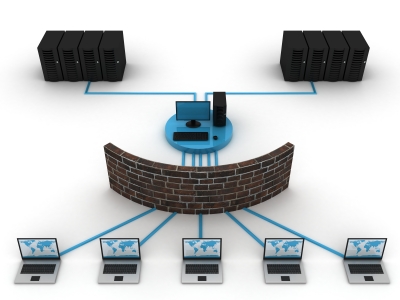 A router is nothing more than a device that connects two or more different networks and establishes communication between them. It is that black or white box with the antennas you see in your home or office. A router essentially routes data or traffic; hence, it is called a router. You can think of it as a gateway that connects you to the World Wide Web or internet.
A router is nothing more than a device that connects two or more different networks and establishes communication between them. It is that black or white box with the antennas you see in your home or office. A router essentially routes data or traffic; hence, it is called a router. You can think of it as a gateway that connects you to the World Wide Web or internet.
Though it is a marvelous piece of equipment, it is susceptible to internal and external attacks and you need to implement and improve certain security protocols within the device. A router can be accessed by a hacker to plant malicious software or steal vital information like your credit card details. In this blog post, 5 ways will be highlighted and discussed in order to strengthen your router’s security.
1. Always Use a Strong Password
You might have been hearing this since you first started browsing the internet; you need to ensure that you use a strong password for your router. In this case, the password being referred to is the Wi-Fi password. Most routers come with standard passwords that are generated from a well-known algorithm.
Using the same default password can make your router vulnerable to hackers and malicious programs. Hence, you should change it immediately and use a stronger one. Avoid using your birth date, name or home address.
2. Switch Off WPS
WPS is an encryption that allows different authorized users to connect to your router without hassle, but this can also cause hackers to gain unauthorized access to it as well. Therefore, turn off WPS in the settings and choose AES as an encryption. AES is supported by WPA2 and it uses a 26 character key which is virtually impossible to break.
3. Change the Default IP Address Ranges
Normally, IP addresses such as 192.168.1.1 or 192.168.0.1 are used in home and small office networks. These are class C IP addresses. Although easier to implement, they are prone to CSFR attacks; a cross-site request forgery is an attack in which an authenticated user’s network is hacked to perform undesired functions on a trusted website.
To prevent CSFR attacks, change the router’s default IP range to use class A or class B IP addresses like 10.0.0.1 or 140.0.1.1.
4. Update Your Router’s Firmware
Just like you update your phone’s firmware or install important Windows updates, you should update your router’s operating system or firmware as well. This fixes known security vulnerabilities, thus reducing the likelihood of security breaches.
5. Disable Remote Management
If you are running a company, you should ensure that routers don’t have remote management access. If you need to manage the router remotely, do so by establishing NAT rules like VPN or SSH; these will allow you access the router safely from a remote location.
Additionally, you can employ certain tools to check whether employees and staff are connecting to routers using management interfaces that are vulnerable.

